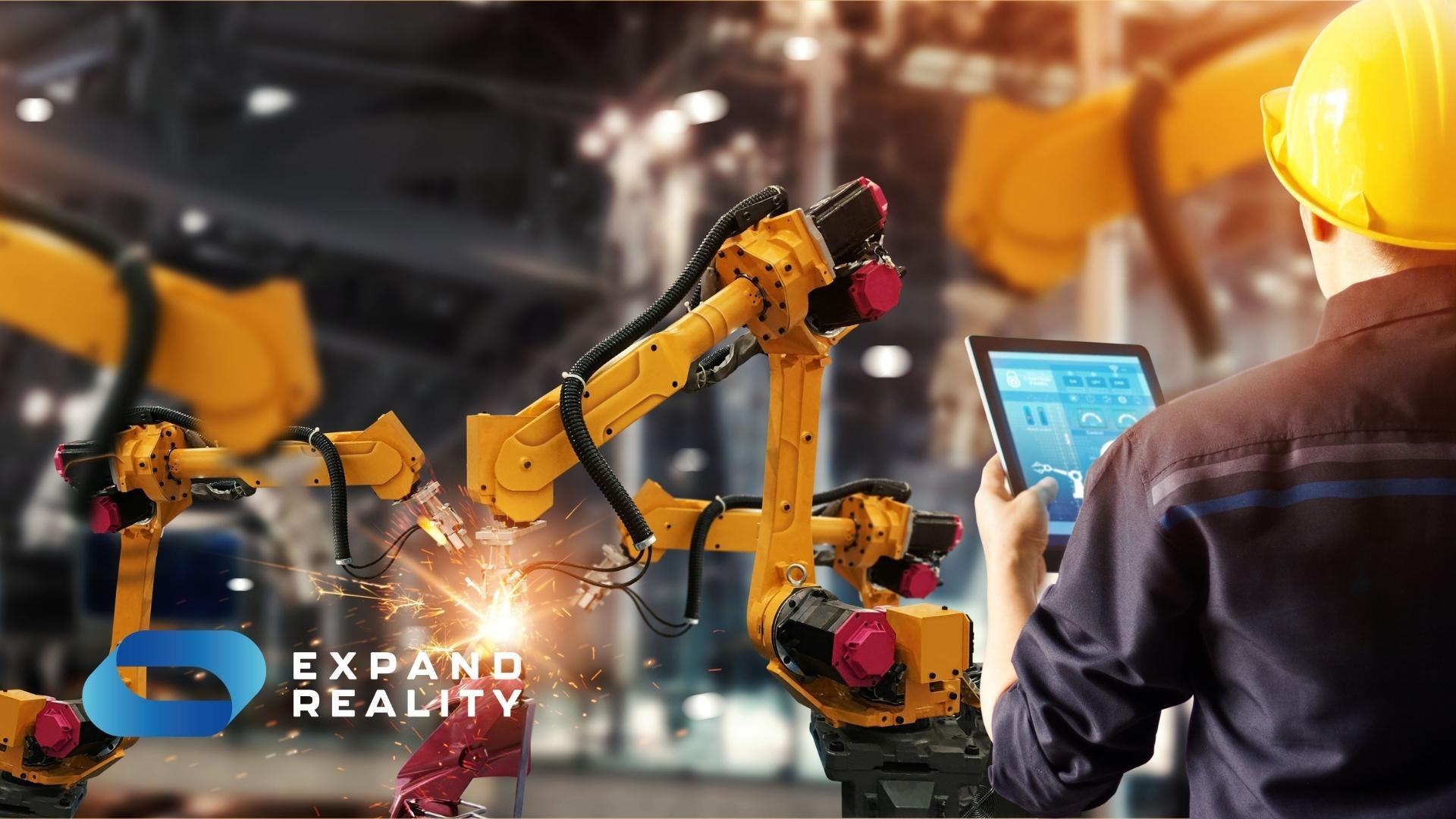hello@simplyvideo.io
How XR is used in the manufacturing industry
Learn how extended reality (XR) devices can boost productivity, improve safety and cut costs in manufacturing. See key use cases in our industry guide.

The world, we're told, has undergone a working revolution. Thanks to technologies like video conferencing and cloud-based file sharing tools, workers can communicate over great distances and collaborate like never before.
While this might be true, the revolution has not been universal. The headlines shriek about "the new normal of home working" and "hybrid workspaces", yet forget about one huge subset of the working population – deskless workers.
Considering that 80% of the world's workforce don't regularly sit at a desk for their job, this is a pretty significant oversight.
For industries like manufacturing, this presents a problem. How can manufacturers keep their frontline staff in step with the expectations of the modern office? How can they bridge the gap between desk and floor?
Using extended reality (XR) technology, that's how.
XR devices empower workers to access documentation and data from the frontline. They can improve training delivery and outcomes – and, crucially, allow staff to engage in video meetings from just about anywhere on Earth.
It's little wonder that
nearly 25% of UK engineering and manufacturing businesses are already using the tech.
In this post, we'll show you some of XR's most transformative use cases for manufacturing. But first, let's cover the basics.
Just what is extended reality?
Extended reality is an umbrella term for a range of technologies that alter or enhance our perception of reality.
You might have already heard of virtual reality, which transports users into immersive and realistic 3D environments. This is one of several technologies that fall under the umbrella of XR.
Not all XR devices aim for VR's level of immersion, however. You can think of the tech as a sliding scale, from least immersive to most immersive.
Least immersive – assisted reality (aR)
The clue is in the name: aR devices are designed to assist you as you work. This means that immersion is actively avoided – after all, this would be a distraction and a health and safety hazard.
aR devices are often like head-mounted tablet computers. They'll typically come with a front-facing camera, a distraction-free screen and a microphone. Usually, they can be operated hands-free.
Somewhat immersive – augmented reality (AR)
AR devices sit in the middle ground of the immersion spectrum. They're designed to blend virtual elements with lived reality. For instance, they could display schematic information on top of machinery, or "magic" a three-dimensional coffee cup onto a real-world desk.
Industry-leading AR devices include the
Magic Leap 1 and the
Microsoft HoloLens 2.
Most immersive – virtual reality (VR)
As mentioned, VR aims for total immersion. Perhaps for this reason, they have seen a healthy adoption in the consumer market as a gaming accessory. That's not to say they lack enterprise potential, though – many businesses are exploring VR as a way to deliver safe-yet-realistic training experiences.
XR use cases for manufacturing
Now we're all familiar with the technology, let's discover how it can save time and empower staff in the manufacturing sector.
Access to experts
Machinery failures can be devastating, costing businesses hours of work and causing knock-on effects that can last for many days.
Often, expert help is required to fix the issue. However, these experts may have to be flown in from a remote location. This means more delays and more financial stress.
Equip staff with assisted reality glasses, however, and nobody has to go anywhere. A worker can simply slip on the glasses and stream live, see-what-I-see video to the remote expert. With a little voice-to-voice collaboration, the expert can diagnose the problem and provide instructions to fix it – right there and then.
Improve health, safety and security
Manufacturing can be a technical job at times, so up-to-date documentation must be available to ensure that everything runs smoothly.
However, this can be difficult to deliver. Paper documentation, for instance. is unwieldy and insecure – it's all too easy for someone to pinch some sensitive intellectual property from a filing cabinet.
Then there's the option of portable devices, like tablets and smartphones. However, these can present a health and safety hazard. After all, you need one hand to hold (or at least) operate the device – and some jobs need two hands to be performed safely.
Instead, you can deliver documents from the cloud or a local network, and let staff access them, hands-free, using assisted reality headsets. After all, these are basically high-powered tablets you can wear.
To access the documents, staff only need to scan a QR code using their headset's camera. This makes things even faster because users no longer have to search high and low for that one particular file.
Connect workers and customers
Maintaining strong communications between staff and customers is key. But industrial machinery is loud. As a result, frontline staff have often been excluded from these vital customer interactions.
This can all change with the help of assisted reality headsets, which are often designed with industrial environments in mind. Thanks to built-in noise cancelling headphones, workers can hear – and be heard – over the thrum of machinery.
Now customers and stakeholders can enjoy a direct line of communication to the factory floor. This means there will be fewer opportunities for miscommunication and more opportunities for open and transparent dialogue.
Thanks for reading. Interested in our transformative technologies? Discover more
XR industry use cases or see our devices in action by
booking a free demonstration.

Contact Us
Connect global teams. Collaborate with remote experts. Streamline processes and unlock cost savings with industry-ready extended reality technology.
Contact Info
hello@expandreality.io
Gemini Business Park
Sheepscar Way
Leeds
LS7 3JB
All Rights Reserved | Expand Reality







